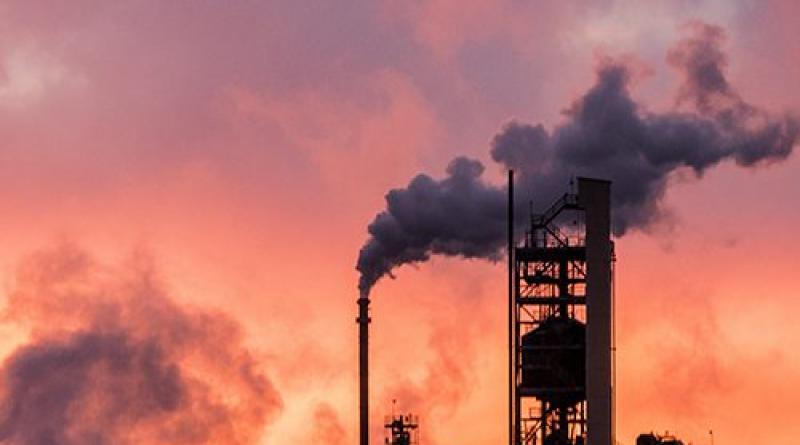Analyst Sees Oil and Gas Running Short of Cash as IEA Releases Energy Investment Update

Despite continuing growth in fossil fuel spending and record investment in coal, clean energy sources are becoming ever more dominant in a world that is expected to spend US$2.8 trillion on all forms of energy this year, the International Energy Agency (IEA) reported last week.
The shift in financing still isn’t fast enough or deep enough to hit a net-zero emissions target by mid-century, the agency warns. But days after the IEA released its World Energy Investment 2023 report, a U.S. bank analyst was asking a question that would previously have been unthinkable: whether privately-owned oil and gas companies will run short of investment dollars to develop new extraction projects.
“Yes, there is a danger, or a risk at least, of a severely diminished ability to privately finance oil and gas projects,” Ed Morse, global head of commodities research at New York-based Citibank, told fossil newsletter Rigzone.
Morse’s assessment was more dire for the industry, more hopeful for a decarbonized future, than the IEA’s. But the Paris-based agency’s report, the latest in an annual series, shows clean energy spending outstripping fossil fuels for the fourth year in a row and growing 24% over the last two years, compared to 15% for oil, gas, and coal, with solar expected to surpass oil production investment for the first time.
Clean Technologies ‘Pulling Away’
Days earlier, the IEA said new solar manufacturing announcements have reached a threshold that would deliver on a 2030 decarbonization target, though only one-quarter of those projects are fully committed.
All told, the IEA expects to see $1.7 trillion invested this year in renewable energy, energy efficiency, grid modernization, electric vehicles, energy storage, and nuclear.
“Clean technologies are pulling away from fossil fuels,” said IEA Executive Director Fatih Birol.
“This crowns solar as a true energy superpower. It is emerging as the biggest tool we have for rapid decarbonization of the entire economy,” added Dave Jones, head of data insights at the Ember energy think tank. “The irony remains that some of the sunniest places in the world have the lowest levels of solar investment.”
But “while fossil fuel investment falls behind cleaner alternatives, it’s still set to reach the highest level since before the pandemic,” Bloomberg Green reports, with the IEA projecting a 6% increase this year. “That would have to start falling sharply this decade to be in line with the IEA’s scenario that would see the planet reach net-zero emissions by the middle of the century.”
The numbers are particularly concerning for the dirtiest fossil fuel, with the dollars flowing into coal projects hitting a level six times higher than where it needs to be by 2030. “Investment in coal supply is set to rise 10% this year to a fresh record,” Bloomberg writes, with about 40 gigawatts of new capacity coming onstream. “The vast majority of that is in China, where power shortages have pushed the government to build new coal-fired plants.”
But the IEA report still shows a dramatic drop in oil production investment between 2013 and 2023, from $636 to $371 billion, with investors now putting $1.70 into clean energy for every $1 going into fossil fuels. “Five years ago,” the agency writes, “this ratio was 1:1.”
That puts countries “in a significantly better place than we were a few years ago,” said IEA Chief Energy Economist Tim Gould. “There’s still a very long way to go, but there are finally some encouraging signs for us all to welcome.’”
Fossils Investing Less
Meanwhile, the report shows oil and gas companies themselves investing far less in new extraction projects—and next to nothing in self-styled low-carbon initiatives like biofuels, hydrogen, and carbon capture, utilization and storage (CCUS)—despite an “extraordinarily profitable” year that saw them take in $4 trillion in profits in 2022. Oil and gas capital expenditures will stand at 48% of total spending in 2023, down from 61% last year, 73% in 2020, and highs of 93% and 94% in 2016 and 2010.
Upstream oil and gas investment will rise 7%, to $500 billion, with around half of that increase “likely to be absorbed by cost inflation,” the IEA says.
“Many large oil and gas companies have announced higher spending plans on the back of record revenues,” the report states. “But uncertainties over longer-term demand, worries about costs, and pressure from many investors and owners to focus on returns rather than production growth mean only large Middle Eastern national oil companies are spending much more in 2023 than they did in 2022, and they are the only subset of the industry spending more than pre-pandemic levels.”
That assessment mirrors the anxiety in the Citibank commentary a couple of days ago. “There is no doubt that the sources of financing [for] oil and gas are diminishing,” Rigzone writes, citing Morse, adding that some private lenders are already “unwilling to lend for the development of certain types of projects.”
“Large oil companies are not eager to enter expensive projects that take more than 10 years for a return on capital,” Morse added. “This is particularly true of European firms, which are basically limiting projects to those that yield a return on capital in five years.”
Millions ‘Suffer Loss’ for Fossil Gains
The IEA attributes the shift in investment to a period of “extreme disruption” sweeping the global energy sector.
“The shock to the system from the global energy crisis has come at a time of increasingly visible impacts of a changing climate, and has taken many forms,” the IEA writes. “Price spikes created strong economic incentives to increase supply and to find alternative or more efficient ways to meet demand. Energy security shocks created powerful incentives for policy-makers to reduce vulnerabilities and dependencies, while also—for many developing economies in particular—draining the financial resources available to address them.”
But with fossil profits sky-high, energy analyst Ketan Joshi casts the IEA report as a “pleasantly maddening picture of exactly how severely the fossil fuel industry has been lying to us”. Oil, gas, and coal companies “saw their net income nearly double,” he writes. But “their investments in non-fossil alternatives, both good (wind, solar, energy storage) and questionable (bioenergy, CCUS) are essentially invisible, relative to their windfall gains.”
With companies investing “close to zero” in “shifting their businesses away from selling deadly and dangerous fossil fuel substances,” Joshi adds, “that money didn’t come from thin air—it came from us. Your absurd electricity bill, the cost of filling up your car, heating your home, buying your food, paying your rent, paying your child care—all of moved from ‘pretty high’ to ‘anxiety-inducing’ thanks to the terrible flow-on impacts of the dual crises of intense reliance on fossil fuels, and the price of those fuels skyrocketing.”
As for the profits that resulted, he writes, “millions of people had to suffer loss, to create this gain.”
The IEA says clean energy investments “have been boosted by a variety of factors,” including their own affordability and stability against volatile fossil fuel prices, policy support in many countries, a “strong alignment of climate and energy security goals,” a growing connection between energy and industrial policy, and consumers investing more in electrified end uses like electric vehicles. “In 2023 low-emissions power is expected to account for almost 90% of total investment in electricity generation,” with solar the “star performer” and other renewables, EVs, heat pumps, and nuclear making important contributions.
But the “impressive” increase in clean energy spending in recent years has been “heavily concentrated in a handful of countries,” the agency adds. China boosted its annual clean energy investment by US$184 billion between 2019 and 2023, the European Union by $159 billion, and the United States by $97 billion. But after that, the totals fall off dramatically, with Japan at $28 billion, India at $19 billion, Africa at $10 billion, the Middle East at $5 billion, and Indonesia and Russia actually reducing their annual clean energy spending.




